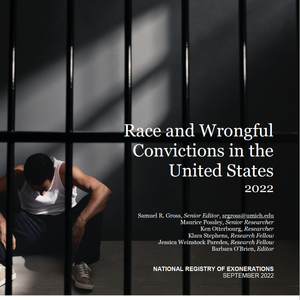
A Death Penalty Information Center analysis of U.S. murder data from 1987 through 2015 has found no evidence that the death penalty deters murder or protects police. Instead, the evidence shows that murder rates, including murders of police officers, are consistently higher in death-penalty states than in states that have abolished the death penalty. And far from experiencing increases in murder rates or open season on law enforcement, the data show that states that have abolished the death penalty since 2000 have the lowest rates of police officers murdered in the line of duty and that killings of police account for a much smaller percentage of murders in those states.
In a new Discussions With DPIC podcast, “Does Capital Punishment Deter Murder?,” DPIC Fellow Seth Rose and Executive Director Robert Dunham explore the assertions long made by death-penalty proponents that capital punishment advances public safety by deterring murders and by protecting police officers. Dunham said the short answer — after analyzing twenty-nine years of annual murder data from FBI Uniform Crime Reports (“UCR”) and FBI annual data on Law Enforcement Officers Killed & Assaulted, Officers Feloniously Killed (“LEOKA reports”) — is no.
“There’s no evidence that the death penalty deters murder and there’s no evidence that it protects the police,” Dunham says. “Murder rates may be affected by many things, but the death penalty doesn’t appear to be one of them.”
DPIC divided the states into three categories to analyze murders and murder trends: states that have long had the death penalty (“death-penalty states”), states that have long abolished capital punishment (“non-death-penalty states”), and states that have abolished capital punishment since 2000 (“transitional states”). The data show that the death-penalty states had an overall UCR murder rate that was 1.39 times higher than the non-death penalty states and accounted for 12 of the 16 states with the highest murder rates. Police officers were murdered in death-penalty states at a rate that was 1.37 times higher than in non-death-penalty states, and accounted for 22 of the 25 states with the highest LEOKA rates of officers feloniously killed. Killings of police were lowest, however, in the transitional states that most recently abolished the death penalty. And while killings of officers accounted for 33 of every 10,000 murders in both death-penalty and non-death-penalty states, they were 1.6 times lower in transitional states.
What the numbers show, Dunham says, is that “the death penalty doesn’t drive murder rates; murder rates drive the death penalty.” While the death penalty, he says, “makes no measurable contribution” to police safety, “the rate at which police officers are killed drives the political debate about the death penalty.”
Discussions with DPIC, Does Capital Punishment Deter Murder? Exploring murder rates, killings of police officers, and the death penalty, posted September 12, 2017.
View Robert Dunham’s powerpoint on the DPIC study, Life After the Death Penalty: What Happens in States that Abolish the Death Penalty?, Joint Meeting of the American Bar Association and New York City Bar Association, August 14, 2017. You can review how DPIC conducted the analysis and see the supporting data here.
Studies
Feb 16, 2024


